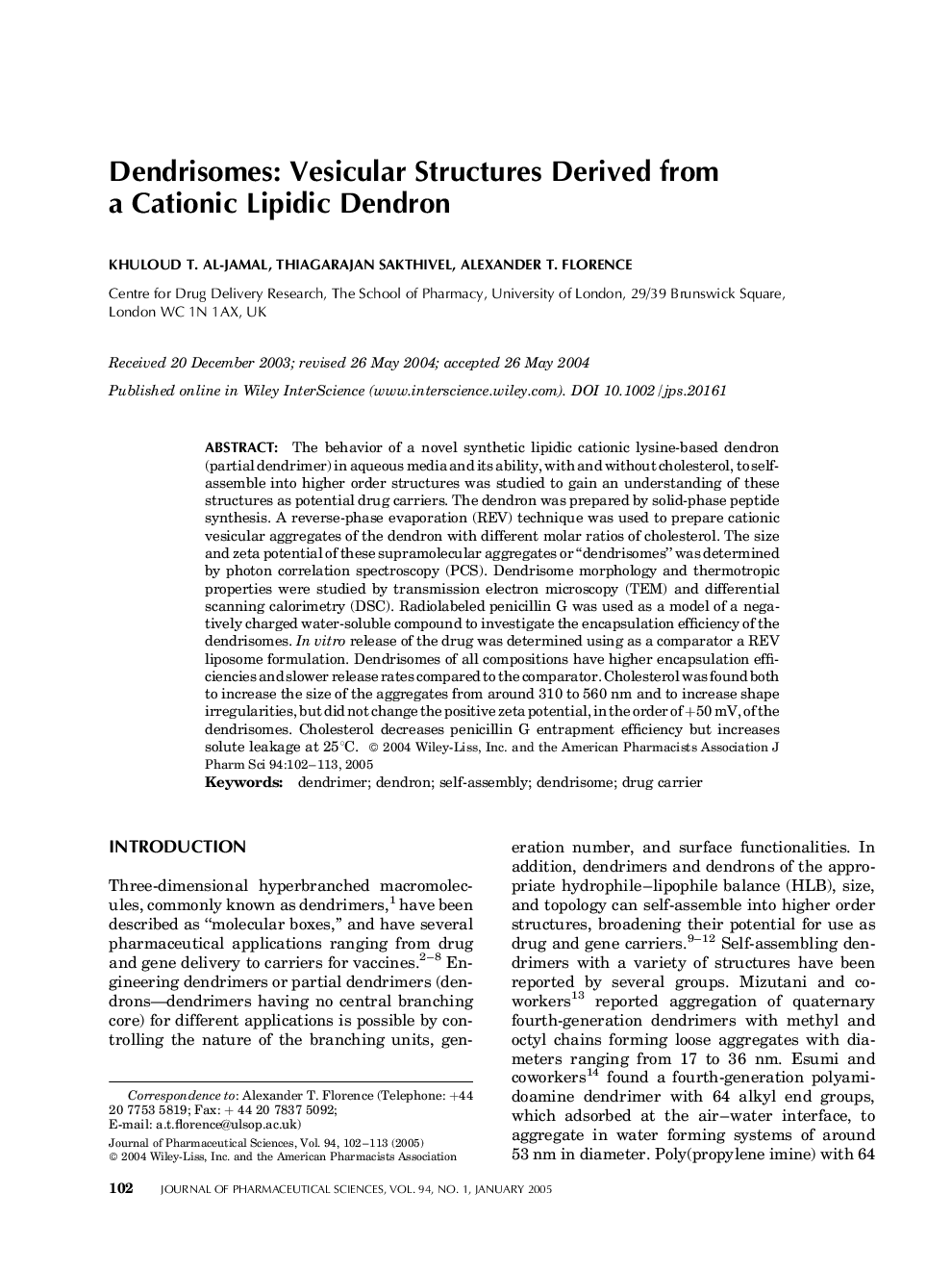| Article ID | Journal | Published Year | Pages | File Type |
|---|---|---|---|---|
| 8994360 | Journal of Pharmaceutical Sciences | 2005 | 12 Pages |
Abstract
The behavior of a novel synthetic lipidic cationic lysineâbased dendron (partial dendrimer) in aqueous media and its ability, with and without cholesterol, to selfâassemble into higher order structures was studied to gain an understanding of these structures as potential drug carriers. The dendron was prepared by solidâphase peptide synthesis. A reverseâphase evaporation (REV) technique was used to prepare cationic vesicular aggregates of the dendron with different molar ratios of cholesterol. The size and zeta potential of these supramolecular aggregates or “dendrisomes” was determined by photon correlation spectroscopy (PCS). Dendrisome morphology and thermotropic properties were studied by transmission electron microscopy (TEM) and differential scanning calorimetry (DSC). Radiolabeled penicillin G was used as a model of a negatively charged waterâsoluble compound to investigate the encapsulation efficiency of the dendrisomes. In vitro release of the drug was determined using as a comparator a REV liposome formulation. Dendrisomes of all compositions have higher encapsulation efficiencies and slower release rates compared to the comparator. Cholesterol was found both to increase the size of the aggregates from around 310 to 560 nm and to increase shape irregularities, but did not change the positive zeta potential, in the order of +50 mV, of the dendrisomes. Cholesterol decreases penicillin G entrapment efficiency but increases solute leakage at 25°C.
Keywords
Related Topics
Health Sciences
Pharmacology, Toxicology and Pharmaceutical Science
Drug Discovery
Authors
Khuloud T. AlâJamal, Thiagarajan Sakthivel, Alexander T. Florence,
